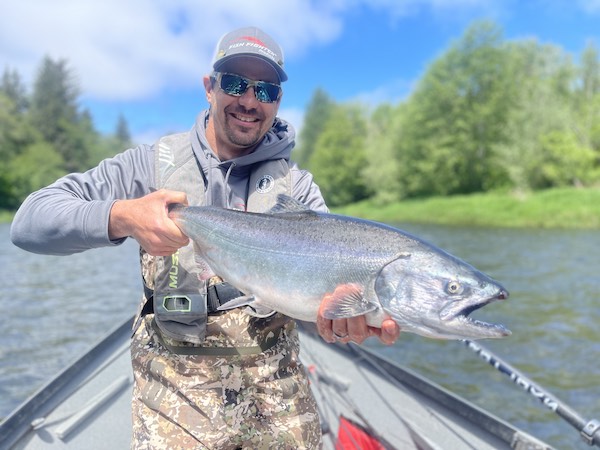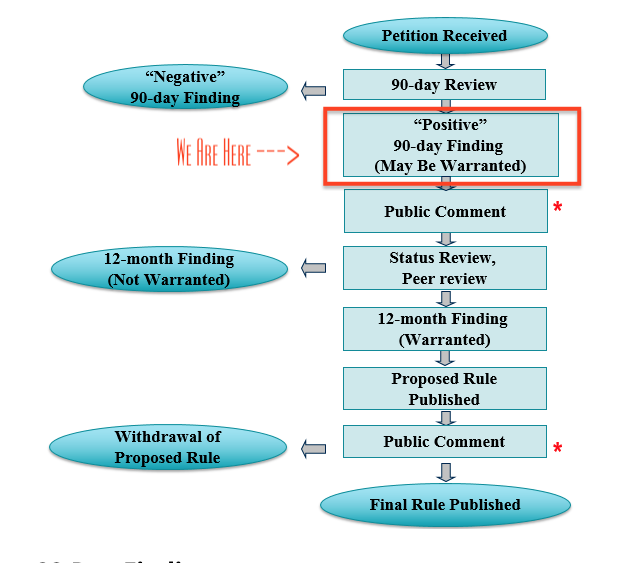
Feds Say Washington Coast Chinook Listing May Be Warranted
Another Washington Coast fish stock could be headed for an Endangered Species Act listing.
Federal overseers say that a threatened or endangered designation “may be warranted” for spring Chinook in the Chehalis, Quinault, Hoh and Quillayute systems, or alternatively all kings in those rivers.

The National Marine Fisheries Service is set to make that initial “positive 90-day finding” after being petitioned by the Center for Biological Diversity and Pacific Rivers last summer and will open a 60-day comment period and 12-month review.
“We find that the petition presents substantial scientific or commercial information indicating the petitioned action to list may be warranted. We will conduct an ESU analysis and status review to determine whether the petitioned action is warranted. To ensure that the status review is comprehensive, we are soliciting scientific and commercial data, including traditional ecological knowledge pertaining to Chinook salmon that spawn north of the Columbia River and west of the Elwha River from any interested party,” NMFS states in a filing scheduled to be posted on the Federal Register tomorrow, December 7.

Public comment will run through February 5, 2024 and there will also be population status and peer reviews before NMFS issues a 12-month finding one way or the other.
Essentially, CBD and Pacific Rivers are looking to either peel spring Chinook out of the overarching Washington Coast Chinook population, or evolutionary significant unit, that in 1998 was found to not require a listing, or list the entire ESU.
NMFS says the two organizations claim there is new genomic evidence that shows there is a strong difference between spring- and fall-run kings and that the stock is facing “existential threats” from a variety of factors – their petition points to “dams, water diversions and migration barriers … habitat degradation due to logging and roads … hatcheries … climate change … ocean commercial and recreational fisheries … increased predation and increases in non-native species such as smallmouth bass” – so the fish require protection not to be found under existing federal, state and international regulations.
While the feds point out that numerous runs have been listed along the West Coast over recent decades and thus there are better protections in place, “to the degree that habitat degradation can be an indicator of regulatory inadequacy, and given that we have found above that habitat degradation may be a threat to (Washington Coast) Chinook salmon, it stands to reason that regulatory mechanisms may be inadequate to protect (Washington Coast) Chinook salmon.”
Spring Chinook fisheries are typically restricted to the Quillayute River and its tributary, Sol Duc, and are focused on the hatchery return.
The pending review adds to a growing amount of work again piling up on the feds’ desk. Early this year NMFS announced that ESA listings could also be warranted for Olympic Peninsula steelhead and Oregon Coast Chinook, kick-starting deep dives on both stocks.
The process will have state and tribal managers gathering info in response as well.
“We will be working closely with the co-managers to provide NOAA information we have in support of their comprehensive review,” stated Kelly Cunningham, WDFW Fish Program director.
The Wild Fish Conservancy and The Conservation Angler petitioned the feds on OlyPen steelhead, Native Fish Society, Center for Biological Diversity and Umpqua Watersheds on Oregon kings.
